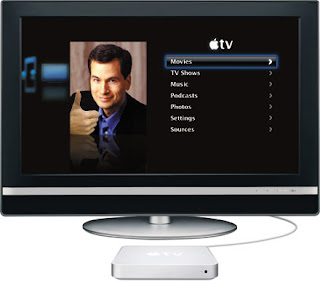
Sony's lineup of sleek televisions boasting Google's Web-surfing system will go on sale very soon, testing how much consumers are willing to pay to combine access to the entire Internet with their regular TV programming.
The high-definition sets unveiled recently will have LCD screens ranging from 24 inches to 46 inches, with recommended retail prices from $600 to $1,400. Sony will begin selling the new sets in its online store Saturday, and they should be available in Best Buy Co.'s US stores by early next week. Pre-orders are currently being taken at both Sony's and Best Buy's websites.
Sony's price for its Google TV sets is $200 to $400 higher than comparable TVs without the highly touted software.
The strong sales of Apple Inc's iPhone and iPad have demonstrated that people are still willing to open their wallets to buy breakthrough gadgets, but persuading them usually requires a snazzy marketing campaign that shows why the products are worth the extra money.
Forrester Research analyst James McQuivey said he isn't convinced that Sony and Google will be able to make a compelling enough case to turn this new generation of TVs into a must-have item, even though he is impressed with the technology inside the sets.
"Price is going to be important," he said. "Google TV is a powerful experience, but most people aren't going to understand it unless they can see it in action. And Google isn't known for its consumer marketing experience. I think they have the right concept here, but I am not sure about the execution yet."
Sony is planning a marketing blitz to promote its Google TV sets through the holiday shopping season, although the company isn't saying how much it will spend on the campaign. Google traditionally has refrained from buying TV ads, relying instead on its ubiquity on the Internet and the marketing acumen of its partners.
Like millions of mobile phones that have been sold in the past two years, Sony's new TVs will be built on Google’s Android operating system. They will navigate websites with Google's Chrome browser and rely on Intel Corp.'s Atom chips for their processing power. The system can comb through the Internet, television programming guides and even DVRs from satellite operator Dish Network Corp. to find all video connected to a request entered into a search bar at the top of the screen.
"Finally, you can seamlessly search your favorite TV programs and websites on the same screen, at the same time," said Mike Abary, senior vice president of Sony Corp.'s home division.

The remote control for Sony's Google TVs includes a standard, "QWERTY" keyboard to enter the search requests or make other comments on the Internet while retaining the ability to watch TV simultaneously.
Logitech International SA has bundled the same Google TV package into a set-top box that can be plugged into existing TVs with HDMI sets. The Logitech boxes, already available for pre-order, are selling for $300, undercutting a similar box with a Blu-ray player that Sony is selling for $400.
Google TV devices will likely face their stiffest competition from an array of less-expensive boxes that also connect to popular Internet services such as movies from Netflix Inc. and songs from Pandora's music-streaming site.
But those enticements haven't been enough to get most people to buy Internet-connected boxes. McQuivey estimates that Apple has sold about 1 million of its set-top boxes so far. Roku Inc. has sold even fewer since it entered the market more than two years ago, McQuivey said, even though the price for its Internet player has fallen to $60.
Those relatively modest sales figures show how reluctant people have been to inject the Internet into the three to five hours they spend, on average, in the so-called "lean back" mode of watching television.
But that almost certainly will change as younger people who have grown up Web surfing on their computers while channel surfing on the TVs look for products that bring together the different media. The only question seems to be how much longer it will be until the market reaches the tipping point where Internet TV goes mainstream.
Sony's own research has identified consumers who are under 44 years old as the most likely buyers of the new Google TV sets. McQuivey thinks the market is probably even narrower than that right now, ranging mostly from people between 30 and 45 years old who have settled down into their own households and can afford fancy TVs.
Convinced the Internet TV will be the next big thing, other consumer electronics manufacturers such as Samsung Electronics, Vizio and Mitsubishi also are promoting Web-connected sets and Blu-ray players.
And after brushing off Internet TV as nothing but as "hobby" for years," Apple CEO Steve Jobs appears ready to get serious about the market. His company last month introduced a retooled set-top box that sells for just $99. The Apple TV product is still more limited than Google TV's system, but McQuivey said that may not matter to consumers who have come to love Apple's "prettier and shinier" gadgets.
There should be ample opportunity to convert more people to Internet TV, given that McQuivey expects about 22 million new TV sets to be sold in the U.S. next year.
Google Inc. CEO Eric Schmidt appears fairly certain a lot of them will be showing content from the Web. In a recent speech he said, "Instead of wasting time watching television, you can waste time watching the Internet.”



















